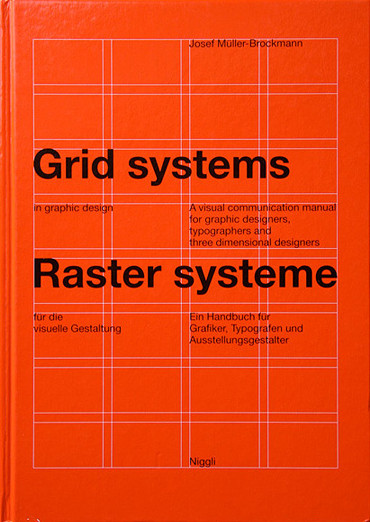Otto Neurath: International Picture Language: The First Rules of Isotype (1936)
Filed under book | Tags: · design, graphic design, visual communication, visual culture

In the first decades of the twentieth century, Otto Neurath and Gerd Arntz invented the Vienna Method of Pictorial Statistics [Wiener Bildstatistik]. The method was renamed in the late 1930s as ISOTYPE ―I(nternational) S(ystem) O(f) TY(pographic) P(icture) E(ducation) ―and was used in the 1940s and 1950s in the Netherlands, Great Britain, Greece, the USA and the USSR.
Publisher Kegan Paul, Trench, Trubner & Co., London, 1936
117 pages
Commentary: George Pendle (Cabinet).
Wikipedia
PDF (8 MB)
See also Gesellschaft und Wirtschaft: Bildstatistisches Elementarwerk, 1930
Comment (0)Paul Rand: A Designer’s Art (1985)
Filed under book | Tags: · design, graphic design, typography, visual communication

IBM, UPS, ABC. If these acronyms ring a bell, their ubiquitous logos springing instantly to mind, then you know the work of Paul Rand (1914-1996), the Picasso of Graphic Design. A pioneer in the field of visual communication, Rand developed a fresh and individual design language drawn from European art movements including Russian constructivism, de Stijl, and the Bauhaus. His career as an art director, teacher, writer, and design consultant to major corporations spanned almost seven decades. Rand arguably got his start at the tender of 3 when he first began to secretly copy pictures of the attractive Palmolive models pictured in advertising displays in his father’s grocery store in Brooklyn, New York. He later modeled his aesthetic on avant-garde artists like Paul Klee, El Lissitzky, and architect Le Corbusier, each of whom advocated a timeless spirit in design. Rand began his career in an era when working by hand was a given, a reality that would change before his eyes as the mass media, entertainment, and consumer industries were revolutionized by increasingly technical equipment, and ultimately the computer.
Steven Heller, senior art director at The New York Times and prominent author of numerous design books, presents this meticulously researched and detailed survey, which marks the first complete retrospective of Rand’s powerful body of work, exploring the full range of his advertising, publishing, and corporate identity projects. Eminent designer Armin Hofmann writes the forward, and the introduction is penned by advertising legend George Lois, who writes, “The constant concern of the scholarly and humanistic Paul Rand was to create images that snared people’s eyes, penetrated their minds, warmed their hearts and made them act.” Appropriately, the designers of this large, bold, beautifully designed book seem well versed in Randism themselves, creating a gorgeous tribute to this quintessential artist’s artist. Rand’s uncanny ability to inject wit and whimsy into the corporate vocabulary is echoed here, for example, in an enlarged reproduction of an opened children’s book whose spine is aligned with that of the actual book held by the reader, creating a playful trompe l’oeil effect.
Publisher Yale University Press, 1985
ISBN 0300034830, 9780300034837
239 pages
PDF (104 MB, no OCR, updated on 2015-1-11)
Comment (0)Josef Müller-Brockmann: Grid Systems in Graphic Design / Raster Systeme für die Visuele Gestaltung (1968) [EN/DE]
Filed under book | Tags: · design, graphic design, typography, visual communication

This book is suitable for those who work with automated text and image design. It shows examples of working correctly on a conceptual level. Exact directions for using all of the grid systems presented (8 to 32 grid fields) are given to the user. These can be used for the most varied of projects. The three-dimensional grid is treated as well. Put simply: a guidebook from the profession for the profession.
The development of organizational systems in visual communication was the service and the accomplishment of the representatives of simple and functional typography and graphic design. In the 1920s in Europe, works already arose in the areas of typography, graphic design and photography with objectified conception and rigid composition. In 1961 a brief presentation of the grid with text and illustrations appeared for the first time in an earlier book by the author. Articles published mainly in trade journals then followed.
This book now attempts to close a gap by giving examples and exact directions to the professional concerning all grid problems that can occur. The author, a world-renowned professional, thus offers his colleagues the tools to solve problems more easily.
Grid Systems in Graphic Design: A visual communication manual for graphic designers, typographers, and three dimensional designers / Raster Systeme für die Visuele Gestaltung: Ein Handbuch für Grafiker, Typografen und Ausstellungsgestalter
Publisher Niggli Verlag, 1968
176 pages
Grid Systems in Graphic Design / Raster Systeme für die Visuele Gestaltung (English/German, 1968, no OCR)
Sistemas de retículas / Sistemas de grelhas (Spanish/Portuguese, trans. Ángel Repáraz Andrés / Fernando Peraira Cavadas, 1982, added on 2013-12-11, removed on 2017-3-9 upon request of the publisher)

